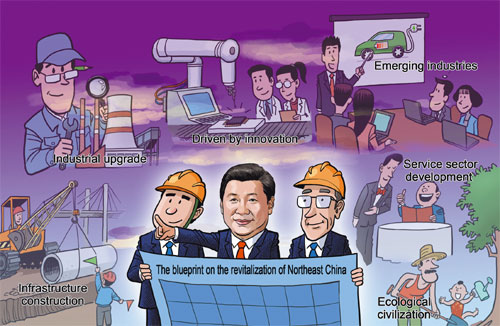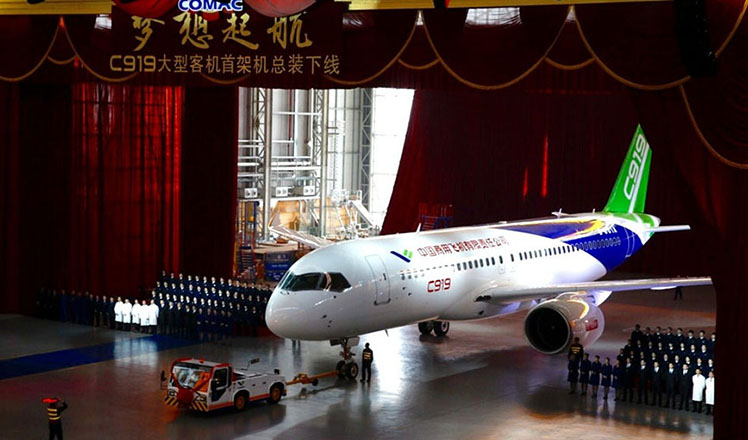Difficulties ahead to revive China's 'Rust Belt'
Updated: 2016-05-03 07:59
By CHI FULIN(China Daily)
|
|||||||||
 |
|
Luo Jie / China Daily |
A recent policy document issued by the State Council, China's Cabinet, says "old industrial bases", meaning Northeast China, will make significant progress in the key areas of reform by 2020 and, revive by 2030.
The document says the northeast region's opening-up, which includes expanded and all-directional opening-up to advance reforms, will become a new driving force for its revitalization.
From 2003 to 2013, China launched the first campaign for the region's revitalization. As a result, significant and historical changes were achieved in infrastructure construction and the development of heavy chemical industries thanks to the support of the central government, as reflected in its growing economic strength, a better economic environment and a tangible rise in its economic aggregate.
However, the campaign has failed to achieve a breakthrough in structural adjustment and institutional innovation, and the region's structural and institutional contradictions and problems have been exposed once again vis-a-vis the country's economic transformation and upgrading.
The new campaign to revitalize Northeast China should, therefore, focus on structural adjustment and institutional innovation to transform the region into a base of advanced or upgraded manufacturing. For its revival, a modern perception of the service sector should be cultivated. The region could learn from the experiences of Germany, whose modernized service sector accounts for 70 percent of its GDP and production-related services account for 70 percent of its service sector.
Northeast China should also strive to realize the transformation and upgrading of its manufacturing sector in order to establish an industrial model in which its modern services, production-related services in particular, is the driver of the transformation and upgrading of its manufacturing.
The low proportion of modern services in its industrial structure has seriously restricted the transformation and upgrading of manufacturing in Northeast China, which, in turn, has slowed its broader economic transformation. And without key progress being made in restructuring of State-owned enterprises, the main force of the region's manufacturing sector, structural adjustment and institutional innovation will be difficult to achieve.
Related Stories
Provincial official in NE China under graft investigation 2016-04-06 16:03
NE China using highway construction to boost economy 2016-03-28 15:52
NE China embraces innovation-driven development 2016-03-22 15:46
Opinion: Overcoming the challenges of NE China 2016-03-23 14:22
Today's Top News
AC Milan starts sale talks with Chinese investors
London's mayor an exception to Muslim ban -Trump
China consumer prices up 2.3% in April
EU anti-dumping moves may damage ties with China
Search widens for leading overseas professionals
60% of career women say no to second child: report
Testing times
Big hopes as China hosts the G20
Hot Topics
Lunar probe , China growth forecasts, Emission rules get tougher, China seen through 'colored lens', International board,
Editor's Picks

|

|

|

|

|

|







